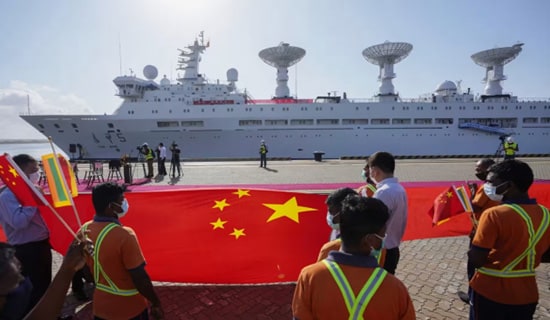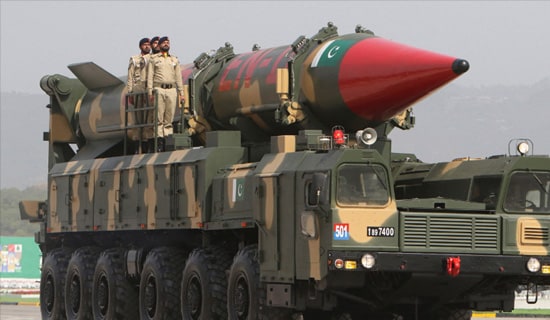On December 16, 2017, an organization apparently affiliated with the Saudi government posted an animated video on YouTube, Twitter, and other social media platforms warning Iran of Saudi retaliation in the event of an Iranian military strike against a Saudi ship (see MEMRI TV Clip No. 6319, KSA Animation Video: Saudi Forces Conquer Tehran In Retaliation For An Iranian Attack On A Saudi Ship, December 16, 2017). The video, which is in English with Arabic subtitles, with additional versions in different languages, begins with a quote by Saudi Crown Prince Mohammed bin Salman Al Saud: "To reach the Qibla of the Muslims is a main target for the Iranian regime. We will not wait until the fight is in Saudi Arabia. We will bring the fight to Iran." Next, a Saudi aid ship in the "Arabian Gulf" is depicted under attack by Iranian speedboats, and a Saudi frigate is shown destroying the incoming Iranian boats. Following another attack, this time by missiles which are intercepted and destroyed by the Patriot radar system, the Saudi command is shown embarking on a retaliation attack, by air, land, and sea. Finally, Saudi ground forces are depicted invading Iran and reaching Tehran where they storm an Iranian bunker and capture General Soleimani, the commander of the Quds Force of the Islamic Revolutionary Guard Corps (IRGC), who is shivering in fear. The video culminates in a mass celebration in Azadi Square in Tehran, where posters of the Saudi Crown Prince are held aloft and Saudi flags are raised, and during which Saudi planes drop leaflets reading "Peace be upon you. We are with you" on the Iranian crowds.
The video was the object of speculation and interpretation in media and research circles in the West, which, lacking relevant information, failed to connect it to the record of threats by Iran against Saudi Arabia in recent years.
Moreover, they were apparently unaware of a direct Iranian threat to bomb Saudi targets issued in 2016, also in the form of an animated video (see MEMRI TV Clip No. 5261, Iranian Animated Film Simulates Yemeni Missile Attacks On Saudi Oil Fields, Military And Civilian Targets, January 9, 2016).
They were even ignorant of a threat delivered only a few days prior to the release of the Saudi video by the editor of Kayhan, Hossein Shariatmadari, who is known to be close to Supreme Leader Khamenei, which was posted on Tasnim, the IRGC website, on December 12, 2017. In his article, Shariatmadari called on Ansar Allah (the Houthis) to attack Saudi oil tankers in the Gulf of Aden in response to the Saudi attacks on Yemen. He said: "... Ansar Allah must attack the Saudi oil tankers in the Gulf of Aden and the Red Sea. The value of the lives of women and children being killed in Yemen far surpasses the value of the Saudi oil tankers, and this is the cheapest price that they should be compelled to pay."
However, the Iranian threats reveal far more than hostile intentions, for they provide information from the highest Iranian authorities about actions taken by Iran to supply the Houthis with ballistic missiles, an issue which is today at the center of the emerging crisis between Iran on the one hand, and the U.S. and Saudi Arabia on the other.
For example, in a talk given just six months ago by Medhi Taeb, one of Iranian Supreme Leader Ali Khamenei's close advisors, Taeb publicly acknowledged that Iran has acted to provide the Houthis with ballistic missiles (see MEMRI Clip No. 5986, Senior Khamenei Advisor Reveals Iranian Attempts To Arm Houthis With Surface-To-Surface Missiles).
SUPPORT OUR WORK

Indeed, Taeb explained that on three separate occasions missile transfers were blocked by none other than President Hassan Rouhani himself who, at the time, was worried that they would negatively impact the negotiations about the nuclear deal. According to Taeb, the Americans, who were then already aware of the planned transfers, warned Iran that if it went ahead, negotiations would be stopped. (Needless to say, this restraint ceased to be an issue once the JCPOA agreement was reached in mid-July 2015.)
In the video, Taeb also discusses alternative options for attacks on Saudi Arabia extending to the Kaaba (in Mecca) and the capture of Jedda and Riyadh with ground forces, all facilitated by the "gift" of Yemen which can serve as a launch area.
What does the record of Iranian threats against Saudi Arabia comprise? The following are several examples from MEMRI's research in recent years.
In April 2015, Iranian Gen. Ahmad Reza Pourdestan, Commander of the Ground Forces of the IRGC, threatened military strikes against targets in Saudi sites (here).
On November 6, 2017, the front page of the regime-affiliated Iranian daily Kayhan declared "Ansar Allah Missile Fired At Riyadh; Next Target: Dubai," and a correspondent for the Iranian Tasnim news agency, which is affiliated with the IRGC, tweeted that missiles from Iran and Yemen would make Riyadh "history" (here).
In April 2015, MEMRI published a comprehensive report on Iran's aid to the Houthis (see MEMRI Inquiry and Analysis No. 1155, Iran's Support For The Houthi Rebellion In Yemen: 'Without Iran There Would Be No War In Syria And Ansar Allah Would Have Never Emerged').
In March 2015, MEMRI reported on the immediate Iranian reaction to the Sunni Arab military campaign to push back Shi'ite expansion in Yemen; on calls for Houthis to attack Saudi oil wells and tankers; and on calls for Houthis to operate in Saudi territory and the Straits of Bab Al-Mandeb and Hormuz (here).
*Yigal Carmon is President of MEMRI; A. Savyon is Director of the MEMRI Iran Media Project.




